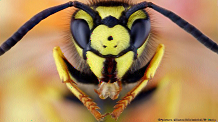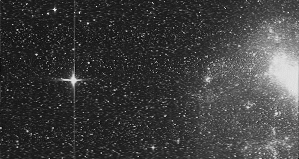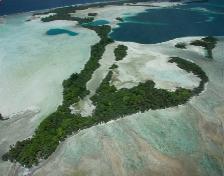http://www.rhci-online.net/radiogram/radiogram.htm
|
RSID: <<2018-08-19T20:25Z MFSK-32 @ 6070000+1500>>
START IBC - ITALIAN BROADCASTING CORPORATION
mail:
ibc@europe.com
|
|
http://www.rhci-online.net/radiogram/radiogram.htm
|
RSID: <<2018-08-19T20:25Z MFSK-32 @ 6070000+1500>>
START IBC - ITALIAN BROADCASTING CORPORATION
mail:
ibc@europe.com
|
|
|
RSID: <<2018-09-22T15:30Z MFSK-64 @ 9400000+1500>>
Storm Florence has returned,
weakened, to the Atlantic, but parts
|
|

RSID: <<2018-09-21T20:31Z MFSK-32 @ 7780000+1500>>
Welcome to program 66 of Shortwave Radiogram.
I'm Kim Andrew Elliott in Arlington, Virginia USA.
Here is the lineup for today's program, in MFSK modes as noted:
1:38 MFSK32: Program preview (now)
2:55 US requiring registration of Chinese media in the USA*
7:09 MFSK128: Wasps play a crucial role in the ecosystem*
10:36 MFSK64: TESS space telescope spots its first exoplanet*
13:35 Remote island bounces back after its rats are eliminated*
19:19 This week's images*
27:07 MFSK32: Closing announcements
* with image(s)
Please send reception reports to
radiogram@verizon.net
And visit http://swradiogram.net
Twitter:
@SWRadiogram
China Talks with US on Demand for Media to Register as Foreign
Agents
VOA News
19 September 2018
China has held talks with the U.S. in an attempt to urge
Washington not to require some Chinese state media outlets to
register as foreign agents, China's Foreign Ministry said
Wednesday.
Ministry spokesman Geng Shuang said Beijing "communicated" with
the U.S. about the issue and added it was opposed to
"politicizing" the media.
The Wall Street Journal newspaper reported Tuesday the U.S.
Justice Department has demanded that China's Xinhua news agency
and its English language television station, CGTN, register as
foreign agents.
The demand, also reported by Bloomberg News, came amid increasing
scrutiny of foreign media groups that could influence U.S. public
opinion.
Registering as a foreign agent could limit the news outlets'
access in Washington. It would put them in the same legal
category as lobbyists who work for overseas entities and could
cause them to lose their congressional media credentials.
Most news outlets in China are state-run and heavily controlled.
Beijing maintains strict limits on the presence of foreign media
and its ability to cover events and travel in the country.
The issue could further escalate tensions between the two
countries, which are engaged in an increasingly intense trade
war.
https://www.voanews.com/a/china-talks-with-us-on-demand-for-media-to-register-as-foreign-agents/4578145.html
See also:
https://www.rfa.org/english/news/china/us-media-09192018135731.html
Image: CGTN news set ...
Sending Pic:220x119C;

Shortwave Radiogram now changes to MFSK128 ...
RSID: <<2018-09-21T20:37Z
MFSK-128 @
7780000+1500>>
This is Shortwave Radiogram in MFSK128
Please send reception reports to
radiogram@verizon.net
From Deutsche Welle:
Good bees, bad wasps?
Wasps are aggressive and useless, people believe. But wasps
are just as important as bees for pollinating our crops, say
scientists. They're calling for a public relations campaign
to overhaul wasps' bad image.
Katharina Wecker
19 September 2018
Wasps are the natural enemy of every picnicker. Forget a peaceful
meal amidst nature in the last days of summer.
As soon as you unpack your delicious food and well-deserved
drink, wasps will close in with their swaying and aggressive
flight.
Instead of taking a tiny taste and then moving along, they will
feast on your food with a scavenger's sense of entitlement.
Bzzz. Thanks for the picnic, buddy!
Bees, on the other hand, are too busy pollinating flowers and
producing honey to even notice your alfresco lunch.
The universally disliked wasp, compared to the cute and friendly
bee - this is how most people regard the yellow jackets,
researchers have found.
For the study Why we love bees and hate wasps, scientists at the
University College of London asked more than 750 members of the
public from 46 countries to describe in three words how they feel
about wasps, bees, butterflies and flies.
Wasps triggered the most negative emotions. "Sting", "annoying"
and "dangerous" were the most common words that came to the
participants' minds.
Butterflies received the highest level of positive emotions,
closely followed by bees.
The researchers weren't particularly surprised by the result -
but said this view is unfair to wasps, because they are just as
ecologically important as bees.
Wasps - huh - what are they good for?
People nursing painful wasp stings often wonder why these devil
insects even exist.
And though they make it hard to love them, it's worth taking a
closer look at wasps.
Wasps actually play a crucial role in the ecosystem.
Just like bees, wasps are among the most ecologically important
organisms for humanity: They pollinate our flowers and food
crops.
But beyond bees, wasps also regulate populations of crop pests
such as caterpillars and whiteflies, contributing to global food
security.
They do this by creepily laying parasitic eggs in the bodies of
caterpillars.
A small wasp colony eats up to 3,000 flies, mosquitos and spiders
each day, and kills insects that carry human diseases.
"Wasps are a health police, they eat other sick animals and
maintain a healthy balance in the ecosystem," Kathrin Klinkusch,
spokeswoman at the German Nature Conservation Union (NABU), told
DW.
She can, however, understand why people are fonder of bees than
wasps.
While honeybees mind their own business collecting pollen, wasps
are in search of protein and take it where they find it,
including from off your plate.
Image overhaul
Despite being disliked and even despised, wasps bring huge
ecological benefits to our planet, says Seirian Sumner, a
researcher at University College of London and author of the
study published in Ecological Entomology. She warned that the
yellow-black insects are under threat.
"They [wasps] are facing a similar decline to bees - and that is
something the world can't afford," wrote Sumner.
Scientists have warned that insects are disappearing at an
alarming rate around the world due to industrial agriculture,
climate change and habitat loss, among other factors.
Yet the study found it wasn't just wasps' antisocial eating
habits that accounted for their bad reputation. Scientists are to
blame, too.
The authors say there has been a lack of public and scientific
interest in wasps, arguing that astonishingly little research
into wasps has been undertaken.
They looked at 908 scientific research papers about pollinators
released since 1980, and only 2.4 percent of them (22 papers)
focused on wasps compared to 97.6 percent (886 papers) on bees.
Considering the lack of research and information about wasps,
it's no wonder that they have a bad image, say the study authors.
Bees have seen increased level of public interest and support
after news of their decline made headlines.
Novels have been written about what our world would look like
without bees, beekeeping has become a mainstream hobby and German
Chancellor Merkel has called on people to "think about
biodiversity and do something good for bees."
Wasps deserve the same kind of appreciation and public support,
argue the researchers.
"It would be fantastic if [support for bees] could be mirrored
for wasps," wrote Alessandro Cini, biodiversity researcher at
University College of London and co-author of the study.
https://www.dw.com/en/good-bees-bad-wasps/a-45555518
Sending Pic:218x122C;

Shortwave Radiogram now changes to MFSK64 ...
RSID: <<2018-09-21T20:40Z
MFSK-64 @
7780000+1500>>
This is Shortwave Radiogram in MFSK64
Please send reception reports to
radiogram@verizon.net
From Science News:
The TESS space telescope has spotted its first exoplanet
Lisa Grossman
18 September 2018
The next exoplanet hunt is officially on. NASA's Transiting
Exoplanet Survey Satellite (TESS), which launched in April, has
taken its first wide-sky science image and has confirmed its
first exoplanet.
The "first light" image (the moniker for a new telescope's first
useful image), taken August 7 with all four of the telescope's
cameras and released September 17, shows a field of stars and two
of the Milky Way's satellite galaxies, the Large and Small
Magellanic Clouds. A few of the stars are so bright they
saturated the telescope's light detector, creating streaks of
light across the whole image.
TESS spotted the new planet, called Pi Men c, crossing in front
of its bright sunlike star 60 light-years from Earth and blocking
a bit of the starlight, data collected from July 25 to August 22
show. That transit revealed that the planet is 2.14 times Earth's
radius and orbits its star every 6.27 days, the TESS team reports
September 18 at arXiv.org.
The researchers found previously unnoticed evidence of the planet
in data from the HARPS spectrograph and the Anglo-Australian
Planet Search, which have monitored the star, Pi Mensae, over the
past 20 years. Those observations show how the planet's gravity
tugs on the star, letting researchers determine that the planet's
mass is about 4.8 times Earth's. Those telescopes had previously
revealed another planet, this one 10 times the mass of Jupiter,
orbiting Pi Mensae every 5.7 years.
Combining the newfound planet's mass and radius shows it has a
similar density to pure water, "though of course we should not
imagine the planet to be a globe of water," the TESS team writes.
Instead, it probably has a core made of iron and rock, surrounded
by an ocean or atmosphere of lighter materials like water,
methane, hydrogen and helium.
https://www.sciencenews.org/article/tess-space-telescope-has-spotted-its-first-exoplanet
Image: The TESS exoplanet telescope's first science image
includes this snapshot of the southern sky. The Large Magellanic
Cloud, a small galaxy that orbits the Milky Way, is on the
image's right. The star R Doradus is so bright it left a spike of
light streaking across the image.
Sending Pic:299x159;

This is Shortwave Radiogram
Please send reception reports to
radiogram@verizon.net
From Futurity.org:
How a remote island bounced back after rats ran amok
Posted by Sonia Fernandez
University of California Santa Barbara
18 September 2018
When Hillary Young, a community ecologist at University of
California, Santa Barbara, spent time at the Palmyra Atoll in
2006 to study the effects of seabirds on resident plant
communities, she got a bit more than she bargained for: rats.
"Rats would literally run over your feet in the dark and skitter
across the tin roofs, keeping you awake at night," she recalls of
her earliest visits there.
Situated in a remote area of the Pacific Ocean, Palmyra Atoll had
only sporadic visitors in its early documented history. But
during World War II, US Navy troops briefly-and heavily-populated
the island while utilizing its strategic location. With the
people likely came the rats, and with no natural predators on the
island, the rodents quickly proliferated and disrupted the
balance of life by eating seabird eggs, native crabs, and native
seeds and seedlings.
Ending the rat invasion
For an ecologist like Young, the effects of the rat activity were
obvious and merited research.
Some seedlings, including those of the native tree Pisonia
grandis, were a particular delicacy. Managers were concerned that
with the rainforest plant population unable to easily replenish
itself, species that depended on them, such as birds and other
small animals, would also face difficulties flourishing. In
addition, recent work has shown that the invasive rats could be
detrimental to the health of the coral reef that surrounds the
island, as the level of nutrients that came in the form of bird
guano often declined when rats were present.
It all began to change in 2011, however, with an effort that
wiped out the pestilent rodent population.
"The rat eradication was an unexpected opportunity to see what
happened when this major seed predator was lost," Young says. "As
soon as it was clear this was going to happen we partnered with
the implementing agencies to monitor the impact and follow up on
our earlier studies."
The effects of the rat removal were immediate and the results of
the monitoring effort appear in the journal PLOS ONE.
"We were so excited to walk into a forest stand of towering
Pisonia trees and find a mat of tiny seedlings carpeting the
forest floor-something that hadn't been observed at Palmyra in
recent decades as far as we know," says Coral Wolf, lead author
of the study and a scientist with Island Conservation. In fact,
researchers found that five years following the rat abatement the
average total seedling recruitment for native locally rare trees
had increased by more than 5,000 percent.
The unexpected perks of being rat-free
An additional, unanticipated benefit of the rat removal was the
eradication of the Asian tiger mosquito. This outcome, according
to the researchers, could open new avenues for controlling
mosquitoes and mosquito-borne diseases elsewhere.
Also, researchers observed two land crab species for the first
time on the atoll's islets, bringing the number of land crab
species at Palmyra to nine. Land crabs are the indigenous
engineers of low-lying tropical oceanic island ecosystems, and
now Palmyra has one of the world's most diverse and
best-protected land crab communities.
The results are not only an indicator of an ecosystem's ability
to bounce back once balance has been restored-they also
demonstrate Palmyra's strengthened ability to withstand climate
change.
"Sea level rise and changing ocean temperature and chemistry will
continue to stress Palmyra's ecosystems," says Alex Wegmann,
Palmyra program director for The Nature Conservancy. "Restoring
Palmyra's native tropical rainforest allows greater
whole-ecosystem resilience to climate change impacts."
These results are only the beginning for the people who study the
atoll's ecology and the effects of removing non-native species.
While the conservation partners plan to continue to bolster the
island's native species population-by removing the invasive
coconut palm, for instance-Young is interested also in how the
island's ecology responds in the long term as it equilibrates at
each step.
"Because the timescale on which many of these processes play out
is so long, and the interaction among species is so complicated,
we don't yet know how the bigger picture story will unfold," she
says. "The outcome is also likely to depend on continued human
intervention as well."
https://www.futurity.org/invasive-species-rats-palmyra-atoll-1866432-2/
See also:
http://www.news.ucsb.edu/2018/019140/paradise-restored
Image: Aerial photo of Palmyra Atoll ...
Sending Pic:224x176C;

This is Shortwave Radiogram
Please send reception reports to
radiogram@verizon.net
This week's images ...
One of the pets affected by Hurricane Florence in North Carolina.
From
usat.ly/2MFy2WP ...
Sending Pic:208x156C;

Light show on the Eiffel Tower to celebrate 160 years of
diplomatic relations between France and Japan in Paris,
13 September. From
bit.ly/2NXtZd6 ...
Sending Pic:205x164C;

Examples of household items produced in Czechoslovakia in the
1920s and 30s, currently on display at the Museum of Decorative
Arts in Prague. From
bit.ly/2MNMlbK ...
Sending Pic:218x118C;

Our painting of the week is by Clark Turner. From
bit.ly/2QMoH2w
...
Sending Pic:174x208C;

Shortwave Radiogram now changes to MFSK32 ...
RSID: <<2018-09-21T20:57Z
MFSK-32 @
7780000+1500>>
This is Shortwave Radiogram in MFSK32 ...
Transmission of Shortwave Radiogram is provided by:
WRMI, Radio Miami International, http://wrmi.net
and
Space Line, Bulgaria, http://spaceline.bg
Please send reception reports to
radiogram@verizon.net
And visit http://swradiogram.net
Twitter:
@SWRadiogram
I'm Kim Elliott. Please join us for the next Shortwave
Radiogram.
RSID: <<2018-09-21T20:58Z THOR 22 @ 7780000+1500>>
pic%

![]()
Thank you for decoding the modes on Shortwave Radiogram.
|
Ending song: https://www.midomi.com/index.php?action=main.track&track_id=100767087061889469&from=voice_search Al Hirt - Green Hornet |
http://www.rhci-online.net/radiogram/radiogram.htm
|
QTH: |
D-06193 Petersberg (Germany/Germania) |
|
|
Ant.: |
Dipol for 40m-Band & Boomerang Antenna 11m-Band |
|
|
RX for RF: |
FRG-100B + IF-mixer & ICOM IC-R75 + IF-mixer |
|
|
Software IF: |
con STUDIO1 - Software italiano per SDR [S-AM-USB/LSB] + beta 11 Version 2.80 (August 21, 2018) - for scheduled IF-recording |
|
|
Software AF: |
Fldigi-4.0.18 + flmsg-4.0.7 images-fldigifiles on homedrive.lnk |
|
|
OS: |
German XP-SP3 with support for asian languages |
German W7 32bit + 64bit |
|
PC: |
MEDION Titanium 8008 (since 2003) [ P4 - 2,6 GHz] |
MSI-CR70-2MP345W7 (since2014) [i5 -P3560 ( 2 x 2,6GHz) ] |

RSID: <<2018-09-19T18:31Z MFSK-64 @ 6070000+1500>>
Bringing the show to WRMI
At the beginning of Slow Scan Radio, some nine weeks ago, I said I would try to
get our show WRMI every 4 weeks, so that it could also be received in the USA.
Most probably a signal from there with 100 kW can also be received in Europa.
After that, I received several requests to make that a weekly event. The only
way for me to accomplish that is with the help of some sponsoring by our
listeners. So that is what I am going to humbly ask you for here.
If you want to take part in this and support the effort for a time slot for the
show at the transmitters of WRMI each week, you can donate to enable us to bring
the show on the air at WRMI that way.
This can be done by PayPal at our
regular mail address x@xdv.me A small amount
will be ok, especially if you would want to repeat that for some time at a later
instance.
I have reserved a starting amount for broadcasting the show 6 times myself to
begin with. So if I am able to have enough people supporting this, we can start
broadcasting from Florida each week at least for several weeks and hopefully
much longer. If I don't succeed
in getting together the amount for a weekly broadcast, then I will stay with the
original plan of broadcasting from Florida once every four weeks at least for
several months.
de k
RSID: <<2018-09-19T18:56Z 20xPSK63R @ 6070000+1500>>
PD50 [320x256]
SLOW SCAN RADIO Logo
.jpg)
PD90 [320x256]
Warning sing at the Duga-3 location (of the Woodpecker)
nera Chernobyl in Ukrain.
|
прохід |
Durchgang verboten! gefährliche Zone |
PD90 PD120
[640x496]
Buildings and antenna of the woodpecker.
PD90 (3 pics)
Werner, PB2GT, together is a shepherd by profession. He has a herd of no less
than 262 sheep, The next three pictures are made by Werner.
The first image is of a mini sheep of the Ouessant breed, weighing only 15 kg and 35 cm (105" high).
PD90 [320x256]
.jpg)
The second is Willow, the best of
Werners shepherd dog, which is of the border collie breed.
PD90 [320x256]
.jpg)
The third picture is a sheep of a Dutch breed, one of his favorites, who is very
friendly to people.
PD90 [320x256]
.jpg)
PD90 [320x256]
Old locomotive in Gut Groß Behnitz (Germany)
PD90 [320x256]
Brown bear on the Kamchatka Peninsula (Russia)
PD90
Astronaut in the ISS
!! image was NOT transmitted
!!
PD120 [640x496]
Train crossing the Otaki river
PD160 [512x400]
Four-spotted chaser (Libellula quadrimaculata) female, variant praenubila,
PD160 [512x400]
SW transmitting antenna at the Grossfunkstelle in Nauen (Germany)
PD180 [640x496]
Waterfall in Khaphal Reserve, Alushta, Crimea
de k
RSID: <<2018-09-19T18:56Z Feld Hell @ 6070000+1500>>

RSID: <<2018-09-19T18:57Z Feld Hell @ 6070000+1500>>


=====> http://www.rhci-online.net/radiogram/SW_Radiogram_2018-09-15.htm#BSR_18v2 ======> http://www.rhci-online.net/radiogram/SW_Radiogram_2018-09-22.htm#SWRG
_ITALCABLE_10_MHz.png?dl=1)
http://toi.inrim.it/ist/it/iensrc.html
http://rime.inrim.it/labtf/src/